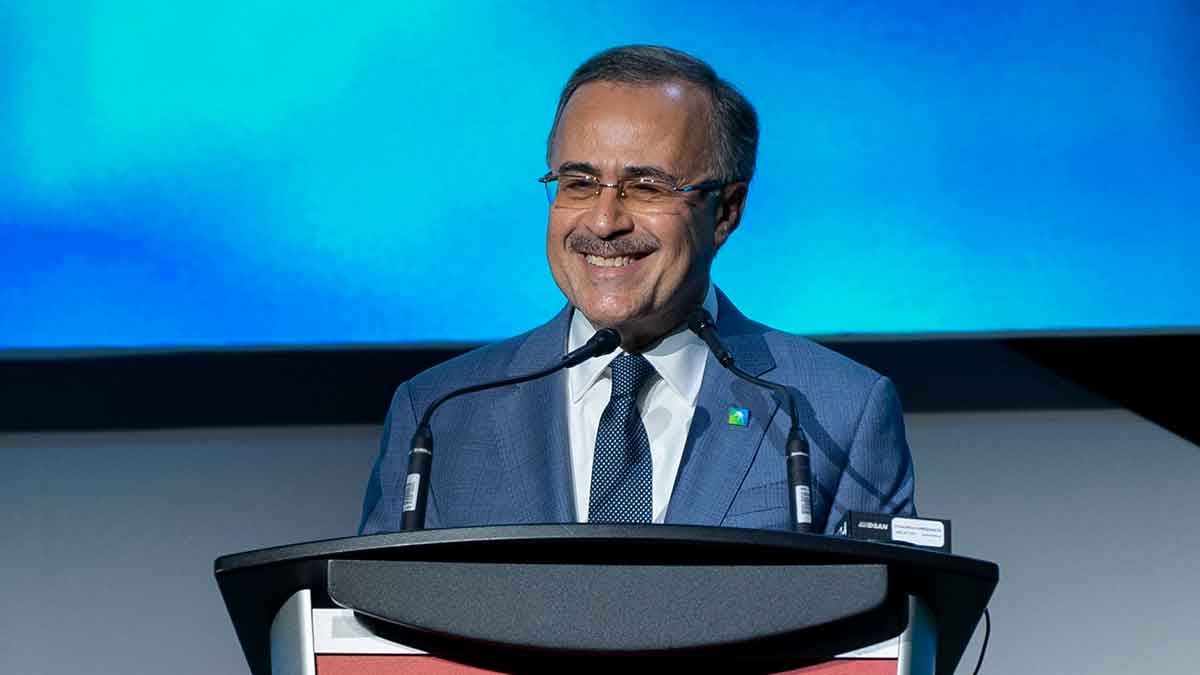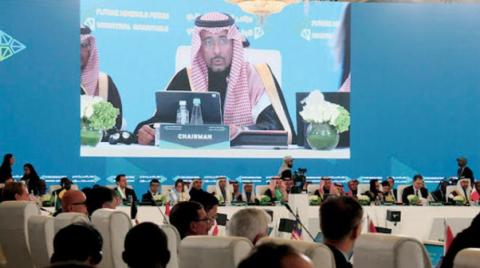
With the world’s focus on conflicts and geopolitical crises plaguing the Middle East and North Africa, it is easy to overlook the extensive catalog of other challenges confronting the region. In times of peace, these issues might command leaderships’ undivided attention, especially in the Arab Gulf. But even during conflicts, they deserve a prominent place on the policy agenda. Without urgent action, these challenges could provoke further unrest, potentially fueling more instability.
At the top of this list is the global energy transition, whose impact will disproportionately affect Arab countries for several reasons. The MENA region, including Iran, supplies about 30 to 35 percent of the world’s primary energy needs through oil and gas exports. These exports are vital to the gross domestic product of many Arab states, particularly the Gulf Cooperation Council members.
In some Arab countries, oil revenues account for up to 90 percent of government income, funding public services, infrastructure and welfare programs. Oil exports also dominate trade balances, enabling trade surpluses and foreign reserve accumulation. This revenue supports subsidies for essentials like fuel and food. Though the energy sector does not employ a large percentage of the population, many jobs in related industries like construction, finance and services depend on oil income. These earnings also sustain strong currencies, often pegged to the US dollar, which helps mitigate inflation and maintain stable exchange rates.
Cross-border investment flows within the Arab world are crucial for financing development projects, stabilizing currencies and generating employment, especially in energy-importing nations like Egypt and Jordan. Non-Gulf Arab countries, while generally less reliant on oil exports, still benefit significantly from them. Libya and Algeria, for example, rely heavily on energy exports, with Libya being one of the most oil-dependent economies in North Africa.
Foreign direct investment in Arab oil infrastructure has brought significant prosperity, especially in the Gulf, where citizens and expatriates enjoy high living standards. Additionally, MENA countries’ role in meeting the energy demands of major economies in Asia and Europe underpins their outsized strategic importance. Today, oil and gas from the region remain essential to global energy consumption.
However, as the saying goes, predicting the future is no easy task. Renewable energy sources and alternative fuels like coal and nuclear are claiming a growing share of the energy mix. The global energy market is evolving with the rise of electric transportation, the geographic diversification of oil production (particularly from the US) and an increasing portion of oil being allocated to petrochemical production.
Gulf states possess significant advantages, making them prime destinations for energy transition investments.
Arnab Neil Sengupta
Above all, the global shift away from fossil fuels and the fight against climate change make dependence on oil revenues increasingly risky. The 2015 Paris Agreement set long-term goals to curb global greenhouse gas emissions, aiming to limit the planet’s temperature rise to well below 2 degrees Celsius above pre-industrial levels, with a more ambitious target of 1.5 C.
The treaty, which includes binding commitments to reduce emissions, calls on countries to strengthen these commitments over time. The UAE and Oman have pledged to reach net-zero carbon emissions by 2050, with Saudi Arabia, Kuwait and Bahrain targeting 2060. Saudi Arabia, for instance, plans for 50 percent of its electricity to come from renewable sources by 2030.
“The Gulf region is on the leading edge of climate change impacts. In 2016, Kuwait and Iraq saw temperatures rise to 54 C, the highest ever recorded in the Eastern Hemisphere. Further warming in one of the world’s hottest regions means global decarbonization must be prioritized to maintain livability,” noted Jim Krane, co-director of the Middle East Energy Roundtable at Rice University’s Baker Institute for Public Policy, in an August policy paper.
Krane also highlighted that, while decarbonization presents challenges, it also opens up opportunities. Gulf states possess significant advantages, making them prime destinations for energy transition investments. These include abundant solar radiation, vast areas of unused land and carbon sequestration potential, with concentrated emissions located near geological storage sites.
MENA countries also have the capital and expertise to advance hydrogen development, as Krane pointed out. Early-stage projects in renewable energy, low-carbon hydrogen production and carbon capture and storage are already underway in the Gulf. A coordinated effort could transform this leading oil-producing region into a global leader in carbon management.
Beyond hydrocarbons, the Arab world is rich in untapped renewable energy sources, particularly solar, wind and hydropower, which are becoming increasingly cost-effective. The region’s solar energy potential is estimated at about 5,000 terawatt-hours per year, while its wind potential is about 50,000 megawatts. These advantages position the region for a promising energy transition, provided the right policies are implemented.
While geopolitics has long dominated discussions about the MENA region, this focus has only intensified since last year due to the ongoing conflicts in Gaza, Lebanon and Sudan, as well as tensions in the Red Sea. However, the nations of this region cannot afford to center geopolitics at the expense of addressing the pressing need for energy transition.
• Arnab Neil Sengupta is a senior editor at Arab News. X: @arnabnsg












